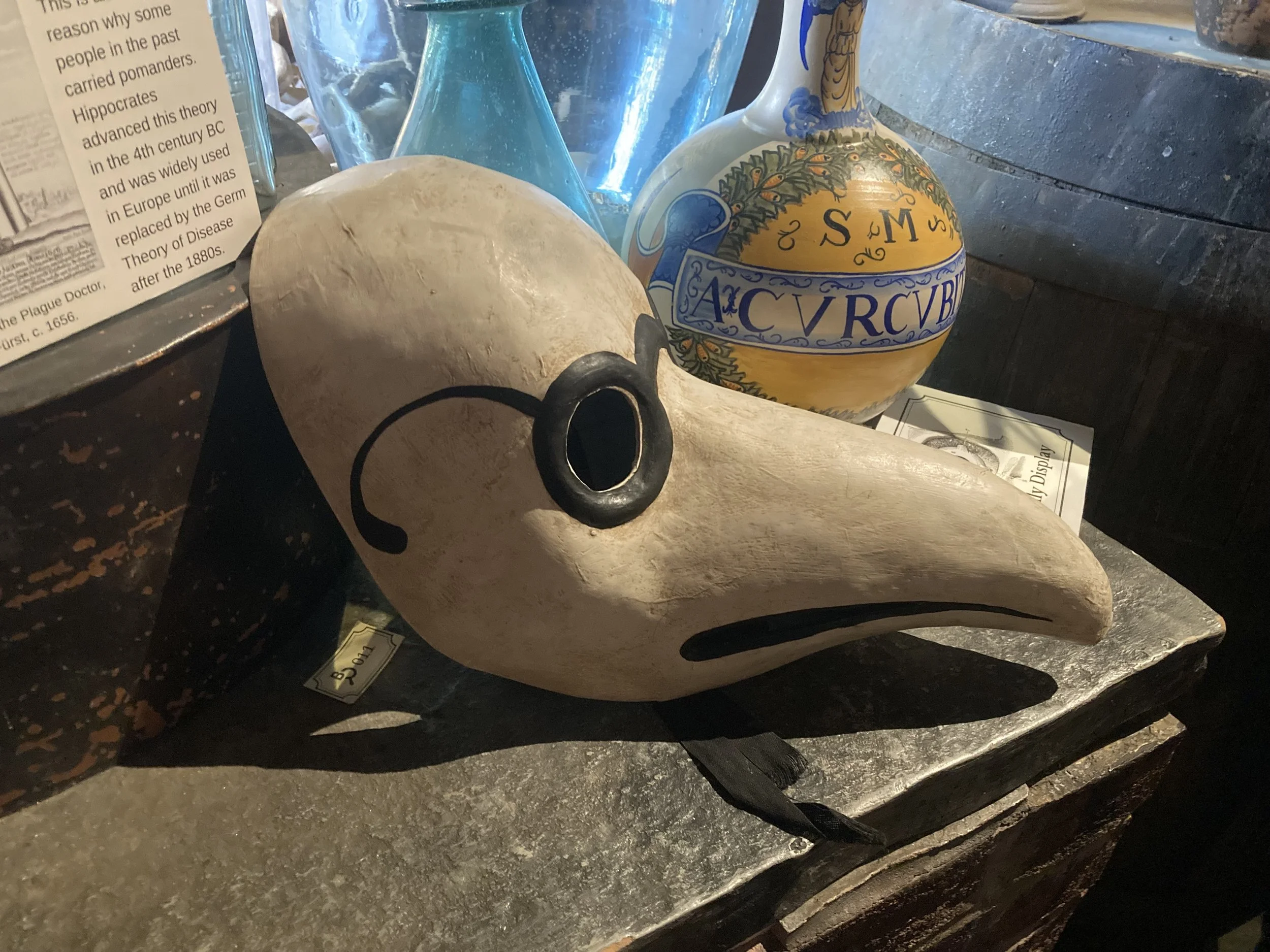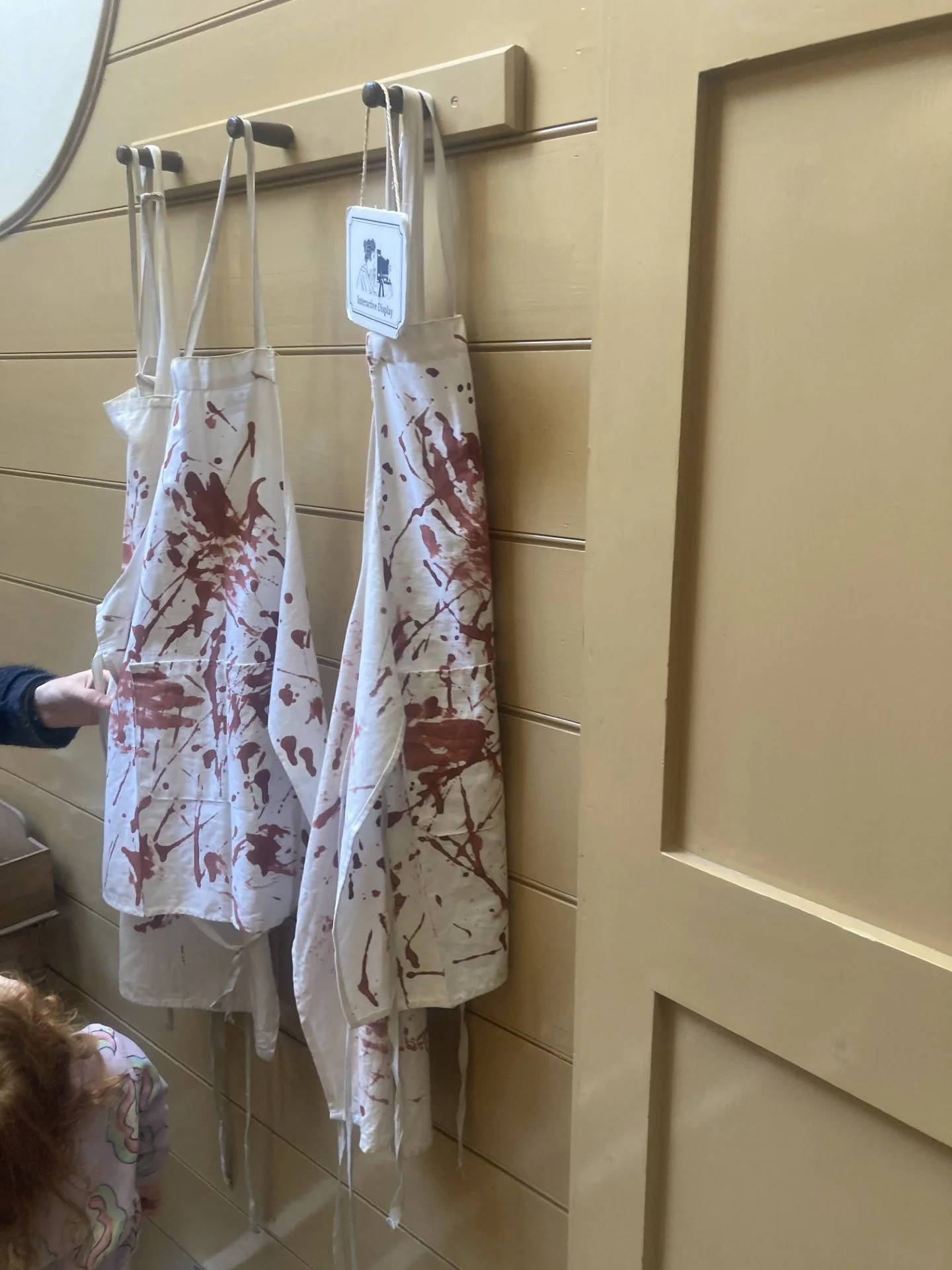The Old Operating Theatre, London England
Plague doctor’s mask
Enter into the Oldest Operating Theatre in Europe
St Thomas’s Hospital is one of the oldest hospitals in London, dating back incredibly to the 11th century. The Southwark site included St Thomas’s church, which was restored from the original medieval chapel of the hospital in the 1600's. The hospital relocated from Southwark to its current site next to Westminster Bridge in 1862 during the construction of London Bridge station. The only part remaining from the hospital’s original location is St Thomas’s Church, where in the attic, the Old Operating Theatre and Herb Garret can be found.
The Old Operating Theater and Herb Garret were discovered by a researcher in 1956, curious to know what was in the loft space of the church, he ascended a ladder via a small opening into the roof space above. To his surprise, he found a long-forgotten part of the old St Thomas's Hospital. When the hospital moved in 1862, the operating theatre was partially dismantled and the theatre and garret bricked up from the neighboring building, thus preventing entry to the space for almost 100 years. After its rediscovery, the site was restored and opened to the public as a museum in 1962.
The rediscovered space included the original women’s operating theatre of the hospital, as well as the herb garret. This is where the hospital's apothecaries dried, stored, and prepared the herbs used in remedies for the sick and dying. The operating theatre section was built in 1822 as an extension of the women's ward located next door in the old hospital. Before the construction of the theatre, surgeries were performed on the ward, in full view and earshot of other patients. By moving operations to the adjoining theatre, the hospital could reduce the sounds of screams and the sight of bloody procedures for the other patients who were awaiting their own fate. It also allowed medical students to observe these grisly procedures from the rows above.
Painting in the museum depicting a pre-anesthetic amputation
The History of Early Surgery
The theatre was connected by doors to the women's ward at the hospital from where patients would be brought into surgery, blindfolded, and held down by several men on the wooden table, ready for their operation. And from the stands above, over 100 men would smoke and watch the bloody procedure unfold.
These surgeries were usually a last resort to save a life and would only be done in dire circumstances as many of the patients unfortunately died as a result of the surgery. Death was often due to catastrophic blood loss or from post-op infections following the operation. In fact, in the 1970s, when builders began replacing the old floorboards in the theatre, they found the original sawdust that was placed underneath in order to soak up the blood spilled in the theatre. The sawdust had congealed so much with blood that the workmen needed cement cutters to remove it.
Common surgeries that would have been performed in the Old Operating Theatre included amputations following trauma to a limb, trepanations (drilling holes into the skull), and bladder stone removals. These procedures would be done without an anaesthetic and lacked any basic hygiene measures, done by surgeons wearing an apron splattered with another patient’s blood and operating with unwashed tools and hands.
One of the above mentioned surgeries done at the theatre called trepanation is in fact one of the oldest surgeries out there with evidence for the procedure being done as far back as 7,000 years ago. It was performed on people for various reasons including the treatment of headaches, epilepsy, and mental health conditions. And in later times, was used following significant injuries sustained to the head. This practice, though used in conjunction with CT's and MRI's, is still used today to relieve pressure on the brain following certain types of head injuries.
The surgeon’s tools
The Apothecary
By the time the old operating theatre was in use, more was known about health and disease, and medicine had moved on from the classical approach of balancing bodily humors. Treatments such as bloodletting and purging were often used in order to balance the humors and restore health. Other odd treatments of the past even included a form of early CPR which consisted of blowing smoke up the deceased anus to try to revive them, definitely one way to get someone to respond! Despite advances in the understanding of anatomy and disease at the time, germ theory was yet to be discovered, hence the lack of hygiene measures on display at the theatre. It wasn't until the later half of the 1800s that the work of Louis Pastuer and Robert Koch on germ theory began to compete with the concept of ‘miasma’ which suggested that disease was caused by bad air or vapors.
The herb garden and garret are also on display at the museum as the attic location was an ideal place for apothecaries to dry and cure their herbs that were used to treat a large array of ailments. In the 18th century, apothecaries were actually referred to as general practitioners. They were not as well-trained nor did they have the same social status as physicians, but they were much cheaper and more frequently used by the general population at the time, a bit like today's GPs, a first point of call for all manner of problems.
Medicines in use at the time of the Old Operating Theatre came from a period before the advent of modern chemistry, thus they were made from naturally occurring substances by the apothecaries of the day. Medicines came in the form of pills, mixtures, and tinctures to be taken orally, as well as ointments and lotions to be applied to various parts of the body. Enemas, suppositories, and pessaries were also available.
Treatments on offer included oil from the head of a sperm whale, used to treat gonorrhea and syphilis, ear wax, used as an antiseptic, and even faeces to be used as an ingredient in various tinctures. Other common medicines that could be bought from the local apothecary included the leaves of Senna, still in use today for constipation, and the bark of a willow tree for pain relief, which is the origin of modern-day aspirin. Ayer’s Cherry Pectoral could be taken for stubborn coughs and colds and consisted of a mixture of alcohol and opium, and cocaine was often used as a tonic for the nerves. Opium pills could be bought and were coated in varnish for the working class, silver for the wealthy, and gold for the very rich, and were all equally effective in relieving pain and misery as well as causing addiction!
Other famously used remedies of the time included mummia—or ground-up mummy—which remained popular in Europe until the late 19th century and was used for everything from heart attacks to headaches. As demand outstripped supply, cadavers were exhumed or freshly executed criminals were dried, salted, and ground into powder. The mummia craze, though little more than a placebo, did not die off until the late 19th century in Western Europe.
The surgeon’s gown
Top Tips
The entrance is via a 52-step spiral wooden staircase with a rope for support that ascends upward on a one-way basis. There is a traffic light system in place as it's much too narrow for more than one person.
There are activities available for kids such as coloring, worksheets, and treasure hunts around the museum. There are also a few interactive activities such as donning a blood-soaked apron and pretending to amputate a sibling's limb!
The museum is part of St Thomas’s church in Southwark, just next to London Bridge and the Burrough market, handy for lunch after if you can stomach it!
Address
St Thomas Street 9A, London
Directions
The closest station is London Bridge, On the Northern or Jubilee Lines, about a 5-minute walk from the station.
Opening Times
Open every Thursday-Sunday from 10.30 am until 5 pm
Tickets
Adults: £ 9, Students and seniors over 60: £ 7, Children: £ 5.50, Family: £ 20
Tours: £ 12 - One-hour talks can be booked for a few selected dates on their webpage and includes museum entry
https://oldoperatingtheatre.com/visiting-us/ for tickets and more information



